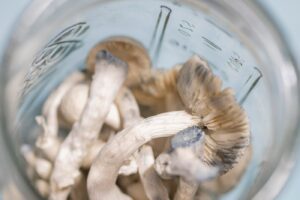One of the very common health problem worldwide and a major cause of disability- affecting performance at work and general well-being is said to be Sciatica or Low Back Pain. Sciatica is a pain affecting the back, hip, and leg caused by compression of a spinal nerve root in the lower back.
It is said to be caused by too much sitting or by too much physical exertion. There are many commercial pills, pain relievers and medications that is out in the market which can help relieve the pain but have many side effects. However, a lot of people are still opting to take natural remedies that will pose no harm in their kidneys and livers.
The following are the causes of Sciatica:

1.Herniated Disc
Herniated disc is a bulge in the cushioning between the bones in your spinal column. If you’ve got a herniated disc, your sciatic nerve gets inflamed and easily irritated, and you’ve got to create some space between the bulging discs in your spine to relieve the pressure.

2.Bone Degeneration
Irregularities in your vertebrae. These get worse with time, and can end up pinching the sciatic nerve, leading to burning pain of sciatica. Some stretches can help to create more space between the vertebrae, alleviating the pressure on the nerve.

3.Tight Hip Muscles
Tightness or pain in your hips can lead to sciatica. Without regular stretching this problem worsens with time. Characterized by a creaky feeling when walking or getting up from a prone position, tight hip muscles are often overlooked but can lead to serious pain.
Although sciatica is problematic and painful, there are some stretches you can do to help ease the pain without even getting out of bed.
The following stretching routines were developed by Jennifer Howe, MPT, CMPT, and teaching associate for the University of Washington’s physical therapy department.
Exercises for Herniated Disc:
1.Press-up
Start on your stomach with your elbows positioned directly below your shoulders and your forearms flat on the bed, parallel to one another.
Lift your chest and extend through the spine from your tailbone to the top of your neck. Allow your back to arch naturally.
Hold for 30 seconds, breathing deeply.
Do 2 more reps then move on to the Press Up Extension.
Lie face down with your hands flat, next to your shoulders.
Press your palms into the bed to lift your upper body, keeping your hips and pelvis stuck to the bed.
Extend the stretch through your spine from your neck to your tailbone.
Let your back arch. Hold for 10 seconds then slowly return to starting position.
Do 10 reps for 1 set. Do 3 sets.

2.Press up Extension
IMPORTANT: Stop lifting your chest if you feel any pressure in your lower back. If you feel no change from doing these stretches it’s likely that you do not have a herniated disc. Move on to the next routine.
Exercises for Bone degeneration:
Knees to Chest
Lie on your back and slowly hug your knees to your chest, allowing your low back to round.
Hold for 30 seconds for 1 rep.
If this stretch lessens the pain in your legs, do 3 reps and then move on to the next stretch. If not, bone degeneration is probably not your problem.
Lie face-up on the bed with your knees bent and feet flat on the bed.
Draw abdominals in to flatten lower back into the bed.
Hold for 5 seconds, then return to start position.
Do 10 reps.
Lie on your back with legs extended, feet flexed.
Lift your right leg, clasp your hands behind your knee, and gently pull your right knee across your body toward your left shoulder.
Hold for 30 seconds. Do 3 reps.
Switch legs and repeat.
Lie on your back with bent knees, feet flat on bed.
Cross your right ankle over your left knee (in the shape of a 4).
Grasp your hands behind your left knee and gently pull your legs toward chest as you press right knee away from your chest.
Hold for 30 seconds.
Do 3 reps.
Switch legs and repeat.
Exercises for Tight Hip Muscle:
1.Knee to Opposite Shoulder
2. Figure 4 Stretch
Important Note:
If any of these stretches causes more pain stop immediately. The pain associated with sciatica can be so severe that you don’t want to get out of bed in the morning. Hopefully these “before you get out of bed” stretches will help relieve some of the pain.





